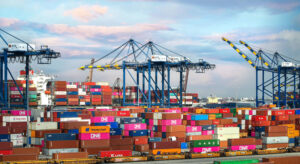
Global Finance and Management of Climate-Related Risk
[ad_1]

Physical Risk
Physical risks represent the potential economic costs and financial losses associated with long-term changes in climate patterns and increasingly frequent and severe climate-related weather events. These chronic and acute risks can affect physical assets, disrupt economic activity, and harm human health. While the physical impacts of climate change are inherently localized in nature, varying within and across countries, impacts such as forced migration and supply chain disruptions transcend borders and are being felt worldwide. Physical risks are spread unevenly across sectors, but economic interconnections mean that direct physical risks and impacts can have reverberating impacts and spill over to other sectors. Certain industries, including agriculture and forestry, real estate, health care, critical infrastructure, energy, tourism, and finance, are more vulnerable to physical risks than other sectors. The insurance sector, for example, is particularly exposed to extreme weather events, which have jumped 83 percent over the past 40 years. The severity of these climate-related physical risks will only intensify as temperatures rise.
Number of Weather-Related Disasters by Cause from 1990 to 2019
As temperatures continue to rise, climate-related natural disasters are becoming more frequent.
Source: Munich Re
Economic Losses from Natural Catastrophes Between 1990 and 2020, Adjusted for Inflation
Costs associated with natural disasters are also on the rise, impacting recovery costs and insurance losses, shown in USD billions and adjusted for inflation.
Source: Swiss Re. Note: Prices are inflated to reflect 2020 prices.
Nettle Beach bay on the French Caribbean island of Saint Martin shows a damaged tourism complex after the island was hit by Hurricane Irma in 2017. Helene Valenzuela/AFP VIA GETTY IMAGES
Transition Risk
Transition risk arises from the uncertain scope and pace of an economic transition to a net-zero emissions economy. Sources of transition risk include changes in policy, regulation, consumer preferences, and investor behavior by governments, companies, and consumers. These changes may result in declines in asset prices, income, and profitability for sectors that generate high-levels of carbon emissions, such as energy, transportation, construction, and manufacturing. While the energy transition will result in financial losses and stranded assets for some businesses, decarbonization will generate new opportunities in other sectors, such as electric vehicle manufacturing, renewable energy, and efficiency-related technologies.
Although physical and transition risks are often considered separate, these risks are deeply interconnected. Changes in carbon emissions directly impact the degree and rate of warming, and thus the level of physical risk. For example, a strong and immediate transition to a net-zero world would increase transition risks in the short-term but help to mitigate physical risks in the future. In contrast, delayed and weak action to address climate change would ease the transition risks in the near term but lead to even greater, potentially catastrophic, physical risks. Delayed actions, followed by strong actions made in an effort to “catch up,” may lead to both high transition and physical risks. Scenario analysis of dynamic risks over near- to medium-term time horizons could help firms anticipate and manage changing risks to their operations and asset portfolios.
Climate Scenarios and Risks
A transition is necessary to contain global temperature increases and will decrease exposure to physical risks. The strength, speed, and clarity surrounding a transition to net-zero will determine the extent of warming as well as the level of exposure to physical and transition risks.
Source: NGFS or OliverWymen
Electricity pylons are seen in front of the cooling towers of a coal-fired power station in Weisweiler, Germany on Jan. 26, 2021. INA FASSBENDER/AFP VIA GETTY IMAGES
Liability Risk
Liability risk involves the costs and losses that may be incurred if climate-related legal action is taken against corporations that have failed to sufficiently disclose climate risk, adapt their business to a net-zero future, or mitigate their impact on the climate. As of 2021, nearly 1,900 climate-related litigation cases have been filed worldwide, 1,400, or 74 percent, of which have been filed in the United States. While the majority of this litigation has been against governments, such legal action increasingly targets companies. The full range of allegations is diverse, including product liability, greenwashing, fraud, human rights abuse, and procedural failure. In addition to the firms that are directly targeted, liability risk may profoundly impact the insurance sector, as insurance companies have underwritten commercial liability insurance policies for high-emitting industries, such as oil and gas producers, which are particularly vulnerable to climate-related litigation.
Climate-Related Litigation Outside the U.S. Since 2000
A rising tide of litigation displays the private sector’s exposure to liability risk.
Source: Grantham Research Institute, the Sabin Center at Columbia Law School
Police stand by as climate activist groups protest in Washington, DC, on Feb. 24, 2020. The U.S. Supreme Court was hearing a case on Dominion Energy’s proposed $7.5 billion Atlantic Coast Pipeline crossing the Appalachian Trail. MARK WILSON/GETTY IMAGES
[ad_2]
Source link

